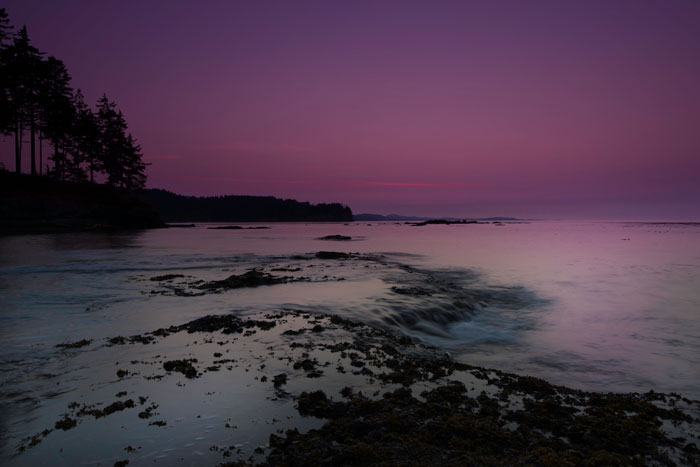
© 2012 Michael Leggero. All rights reserved.
Beach at Salt Creek Recreation Area, Olympic Peninsula, Washington
O.K., I’ll admit it. I set up a photography expedition in the Pacific Northwest with “Bigfoot” researchers. You never know, I could get lucky and make a photo of the big guy! I must say, “These people are interesting!” For those of you wondering, I’ll spill the beans ahead of time. “No, I did not see “Bigfoot”.” I do have one photograph that has an odd shadow, but you’ll have to really use your imaginations. You can do it!
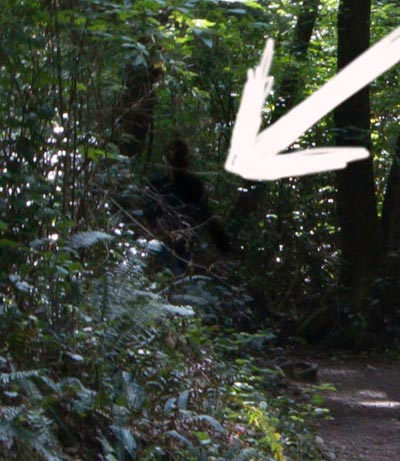
© 2012 Michael Leggero. All rights reserved.
Stare, squint, concentrate and let your imagination go wild. Can you see Sasquatch?
On this trip I learned that people who are devoted to finding a Sasquatch will convince themselves that it is there. My closest encounter was while we were driving up a winding mountain road. Far in the distance a black shape quickly crossed the road in front of us. My companions instantly became excited, “It’s Sasquatch!” they exclaimed. As we got closer there was a huge flock of crows in the field – the black shape! And the true believers went on with, “There is no way a flock of crows can move like that” and “The crows are here investigating something left behind by the Sasquatch.” Hmmm… what did I get myself into? Who knows, maybe they were right and my vision is just going with my old age.
I do have to thank these people though; they did get me to the state of Washington and gave me the opportunity for some spectacular landscape photography.
I choose photographing landscapes over finding “Bigfoot”!
Photographing the Olympic Peninsula
The northwestern part of Washington State, the Olympic Peninsula, has incredible beauty. This is nature at its finest.
After you arrive in in Seattle, you can either take the Seattle-Bremerton Ferry across the Puget Sound to Bremerton or, if you have extra time, you can head south to Tacoma, go around the south side of the Puget Sound, and then head back north again.
Getting around this area of the state is simple, you don’t need a big SUV with four-wheel drive – any normal car will do. What will be important are good hiking boots or shoes, because hiking is a necessity to get to some of the most beautiful and photographic locations. And, since most of the land is national parklands the trails are very well maintained. Be sure to bring your rain gear and waterproof boots, because after all, you are entering a rain forest area. Rain, mist and foggy days are common.
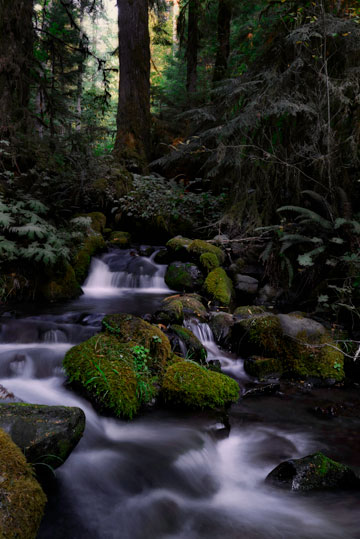
© 2012 Michael Leggero. All rights reserved.
Wiskey Bend Trail, Olympic National Park
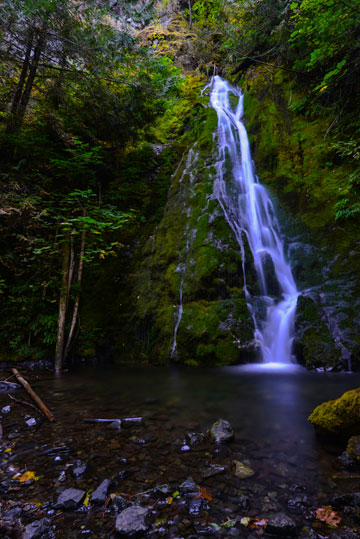
© 2012 Michael Leggero. All rights reserved.
Madison Falls, Olympic National Park
Northwestern Washington has two main cities where you can stay and use as a base of operations, Port Angeles and Forks. From either of these places you can travel to wonderful photographic sites and then back to a hotel each night – no wilderness camping required.
First, we’ll head out from Port Angeles. This has the main entrance to Olympic National Park. The park itself has no road that traverses the entire park, but there are various roads around its periphery. Most are considered starting points for hiking adventurers. At least while I was there, I had no encounters with wildlife along the roads. During my travels, I realized that there were better locations for entering the park, but Port Angeles did provide easy access to photo opportunities along the Strait of Juan de Fuca.
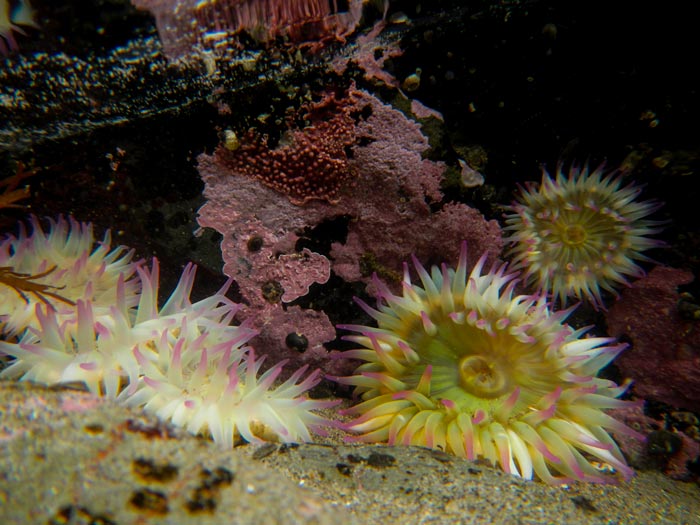
© 2012 Michael Leggero. All rights reserved.
Tide Pools at Tongue Point, Salt Creek Recreation Area
Salt Creek Recreation Area on the north shore, along the Strait of Juan de Fuca in the Salish Sea, is one of my favorite places for sunrises and sunsets. The area is a campground for RV’s and tents, but is open to the public. Locate Tongue Point and walk down to the water’s edge for beautiful tide pools and rock formations. Be sure to check the times for low tide and plan your trip around these times. Low tide will give you the best opportunity for finding small creatures in the tide pools and allows you to get much closer to the rocks.
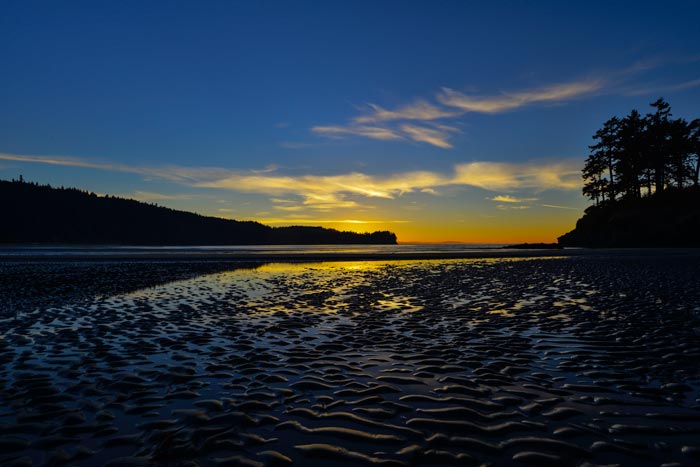
© 2012 Michael Leggero. All rights reserved.
Tongue Point
, Salt Creek Recreation Area
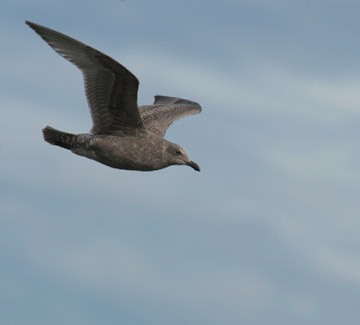
© 2012 Michael Leggero. All rights reserved.
Travel along the northern coast on Hwy. 112, the Strait of Juan de Fuca Highway, and you will reach Neah Bay and Cape Flattery. Cape Flattery is the most northwestern part of the contiguous United States, and it is here where the Salish Sea enters the Pacific Ocean. From the parking area you walk on the wonderfully maintained Cape Flattery Trail about a mile to the edge of the land. Here you’ll be treated with huge cliffs and hundreds of sea birds. If you’re fortunate and arrive on a clear day, a long lens can provide nice photographs of the Cape Flattery Lighthouse. My day happened to be foggy, but this is one of those places where you’ll have the opportunity to create stunning fog images.
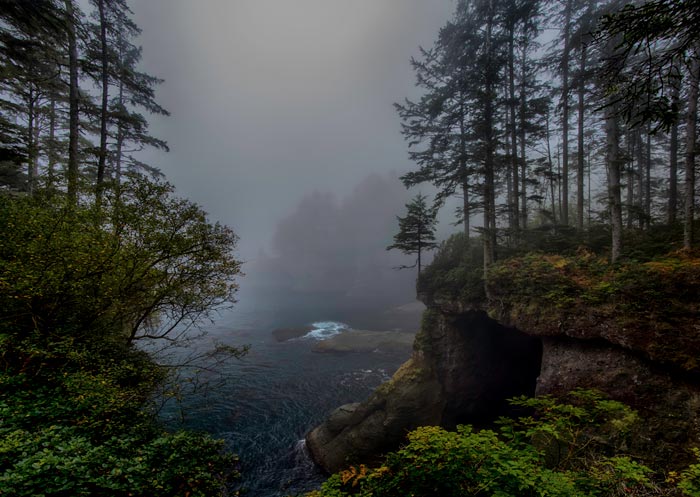
© 2012 Michael Leggero. All rights reserved.
Cape Flattery
Lake Crescent along Hwy. 101 is a giant lake known for its clarity and blue, blue waters. Here you can make photos with wonderful Olympic Mountain backdrops, if you don’t end up with a day of rain and fog like I did. Still, you won’t want to miss stopping here. The mountains keep the winds low and the lake is often very calm and flat. This area would also be good spot for reflection images if you can be there on a great day with sun and clouds. So I moved on – there’s always more to see. Further west on Hwy. 101, you’ll come to Sol Duc Road. Drive into the park and hike around and you won’t be disappointed with the lush greens of the forest floor or the quaint waterfalls along the trail.
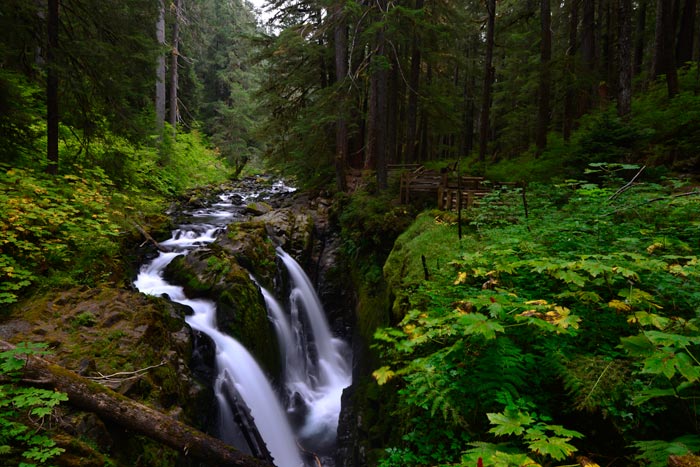
© 2012 Michael Leggero. All rights reserved.
Sol Duc Falls
When you arrive at Forks, on the western side of the peninsula, utilize this town as a base of operations for accessing several beaches and the Hoh Rainforest. Forks is a logging town that is now famous for being the set location of the “Twilight” books and movies.
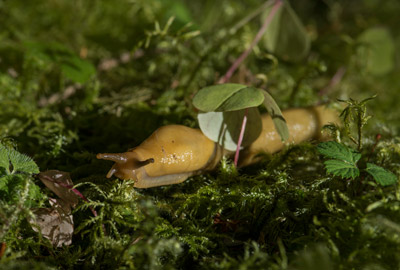
© 2012 Michael Leggero. All rights reserved.
Slug on forest floor in the Hoh Rainforest.
Travel approximately 20 miles south of Forks to the Upper Hoh Road and it will take you into to the Hoh Rainforest. Be prepared to get wet from rain. Bring plastic Ziploc bags for your equipment and you should have no problems. Typically most rainforests only have small times of rain on and off so you won’t be in a torrential downpour all day and if you are lucky you won’t get any rain at all. The two trails I recommend are Spruce Trail and the Hall of Mosses Trail outside the Hoh Rain Forest Visitors Center. Here you will see trees covered in moss. It’s literally just dripping off every branch. Even the floor of the forest is a vibrant green moss carpet. Be on the lookout for the elusive banana slug. These creatures grow 6-8 inches long and allow you to explore your macro skills.
After you’ve enjoyed the rain forest, head west on Hwy. 110 to the coastal beaches. They are spectacular. First, Second, and Third Beach (creative names I know) are your target areas. Huge driftwood trees line the beaches and islands and odd rock formations become great subjects to photograph. Second Beach has good tide pools that are easily accessible and popular with other photographers. They’ll even help you by pointing out where the good subjects are hiding.
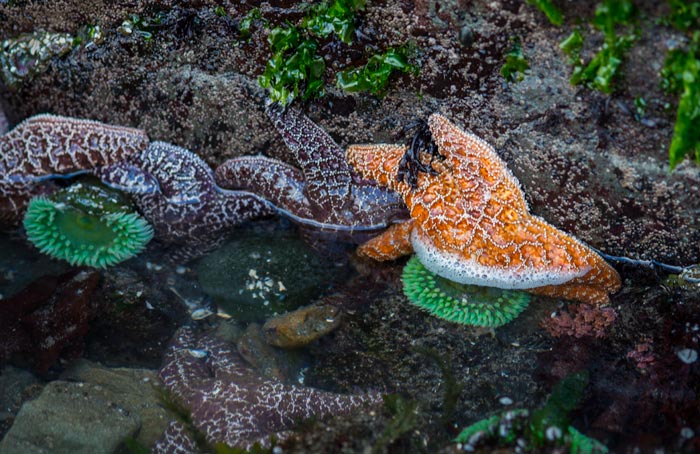
© 2012 Michael Leggero. All rights reserved.
Tide Pool, Second Beach
Rialto Beach is close by also and has the rock islands and driftwood beaches; however, it also has a dead tree forest on the beach that makes for great silhouettes against stormy clouds.
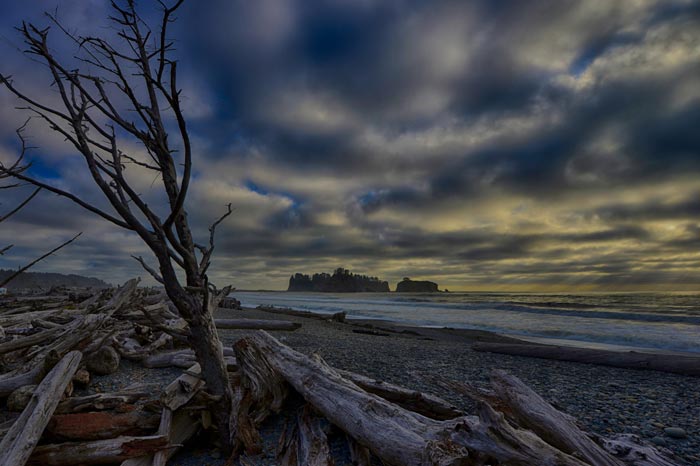
© 2012 Michael Leggero. All rights reserved.
Rialto Beach
There are many, many other sites around the Olympic Peninsula, but these are just a very few that I recommend. Waterfalls are everywhere; one I recommend is Salmon Cascade, which is just like the name sounds. Salmon swim upstream here and with a lot of patience you can get the chance to make photo of one jumping up the waterfall.
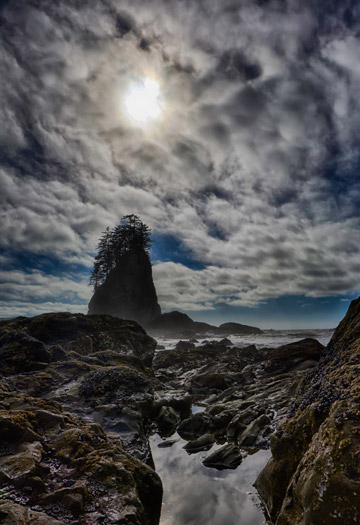
© 2012 Michael Leggero. All rights reserved.
Second Beach
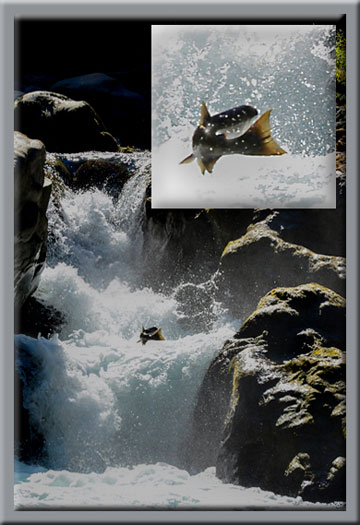
© 2012 Michael Leggero. All rights reserved.
Salmon Cascades, Olympic National Park
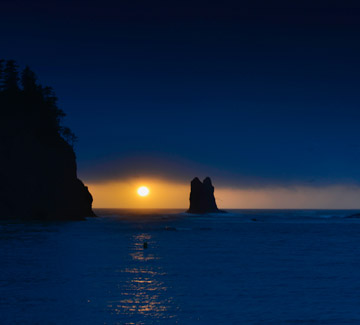
© 2012 Michael Leggero. All rights reserved.
First Beach
Equipment is easy for this trip. I found myself using only 3 main lenses. You need a wide angle (16-35mm), a longer 70-200 and a macro lens. For tide pools I recommend a longer macro like a 105mm, so you don’t have to get too close and risk salt water splashing on your camera—that would be bad. A tripod is definitely necessary here. It is often foggy, so handholding your camera is not recommended. Polarizing filters are also a good idea to reduce glare on the water surface and neutral density filters for the many waterfalls you will encounter. This is a photographer’s paradise, so try your hand at as many styles of photography that you can.
The Olympic Peninsula is an ever-changing ecosystem and your best opportunities come from just exploring what’s around the next bend.
by Michael Leggero

Leave a Reply